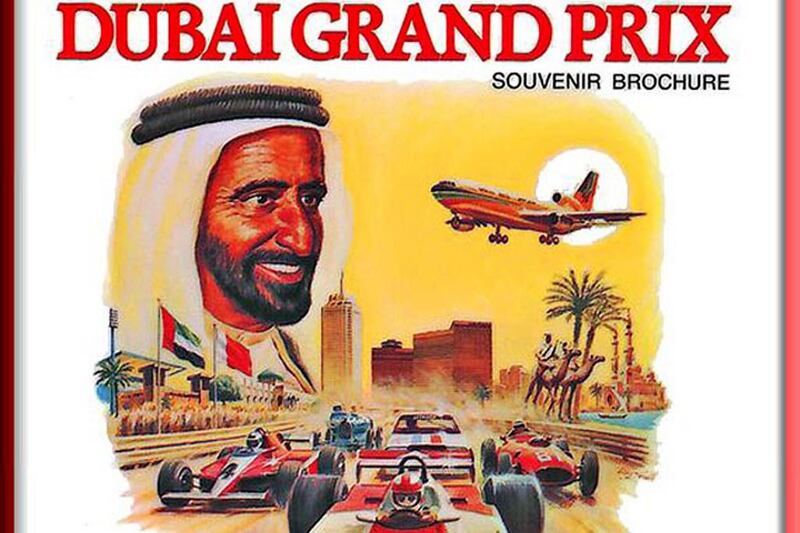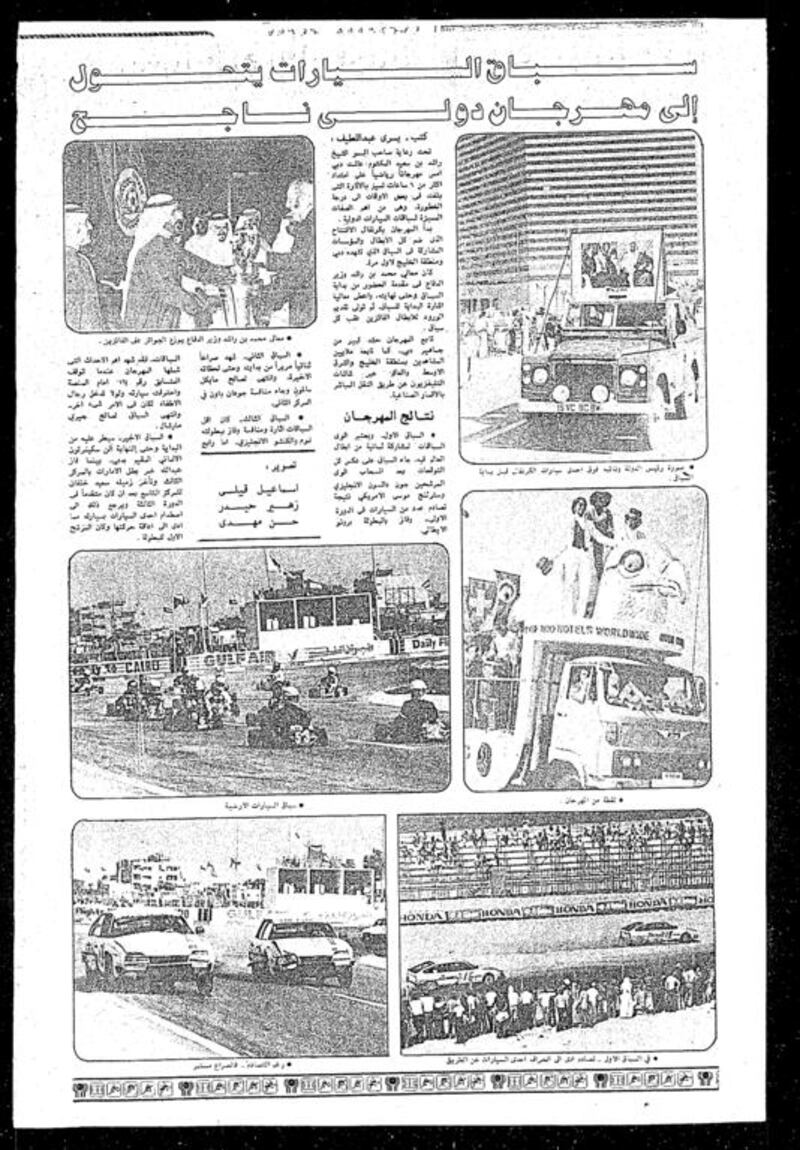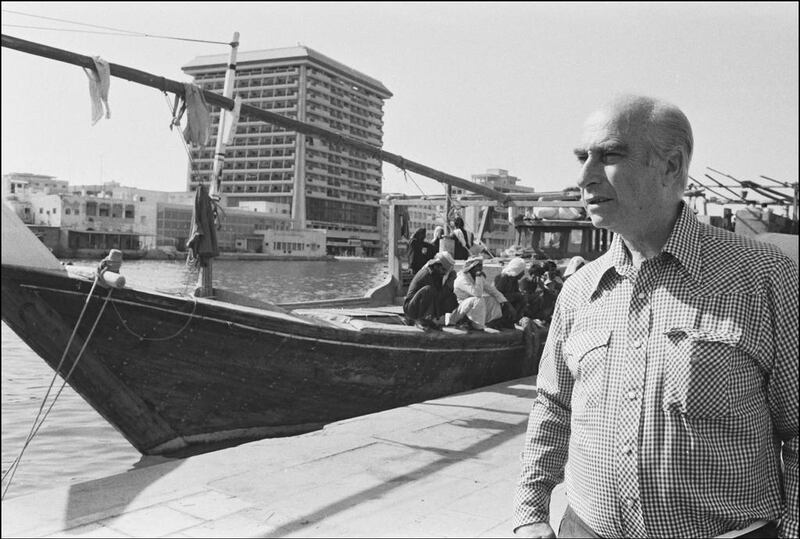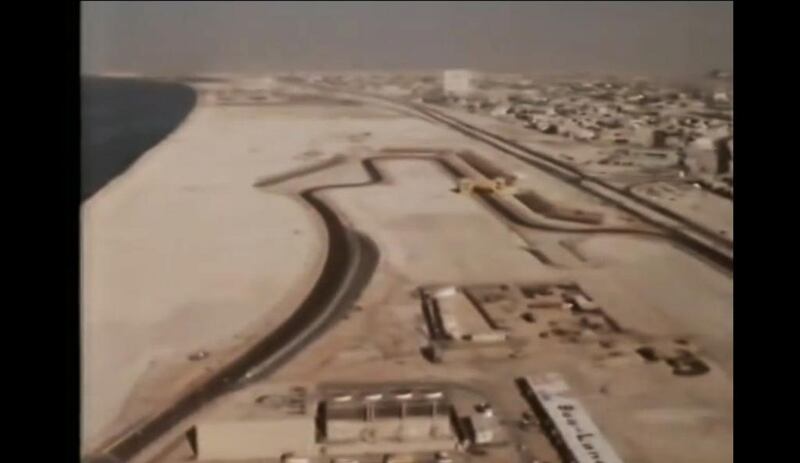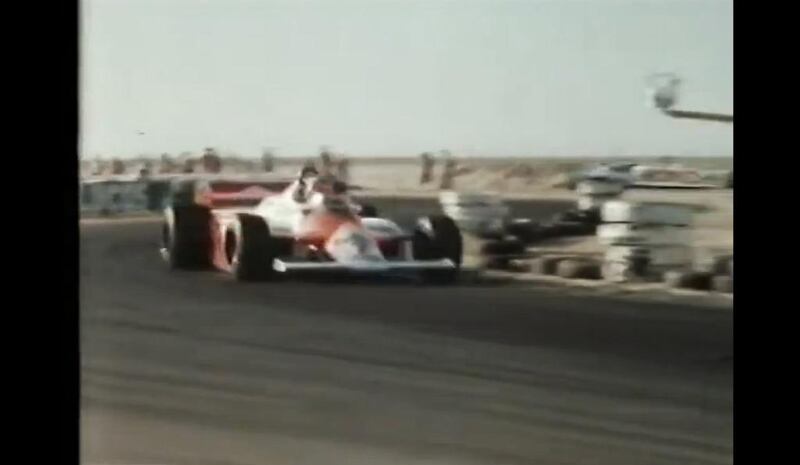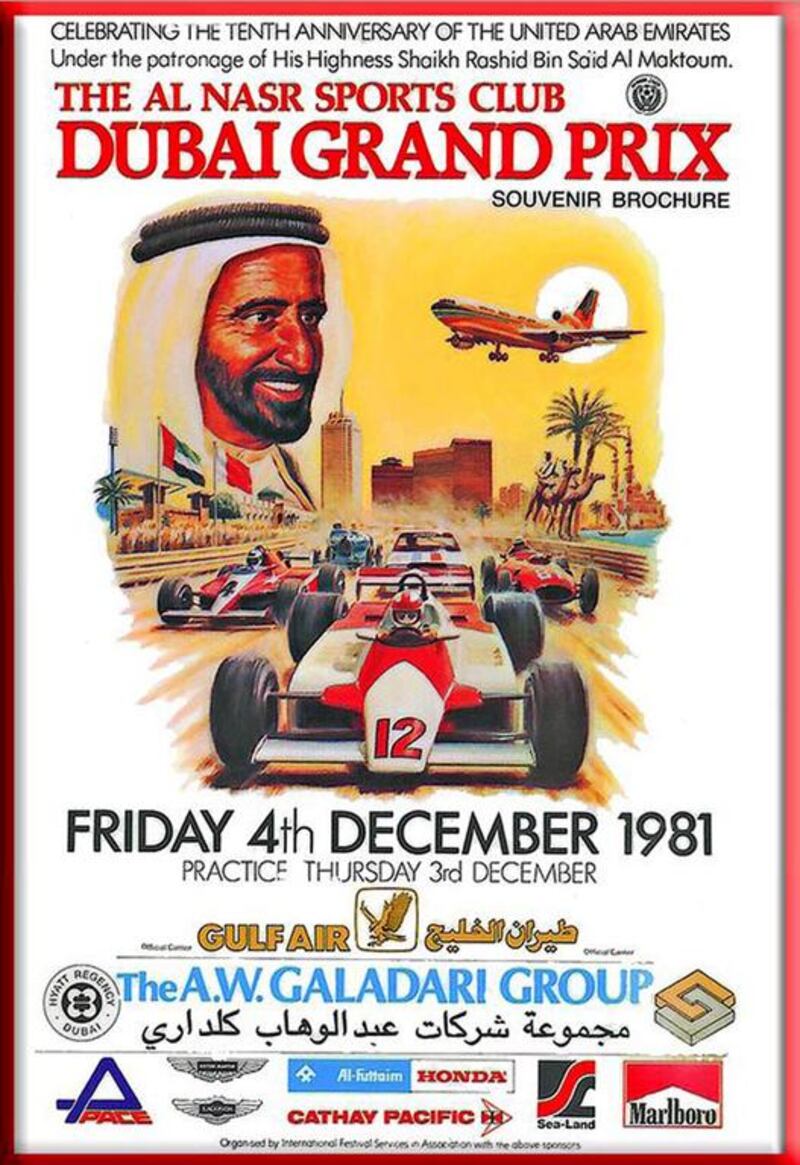DUBAI // Sitting in a stationary car at a set of traffic lights on the Deira Corniche, it is hard to fathom you are parked on the grid of arguably the world's most forgotten Formula One racetrack.
Nowadays, much of the 2.6-kilometre loop that once ran around the Hyatt Regency Hotel and includes Corniche Road and Al Khaleej Road is more like an open-air, four-lane car-park than it is a racing circuit. People scurry across the palm-lined streets seeking shade, low-rise retail outlets sell cheap, imported goods and the cars of fellow commuters pen you in.
There is little indication that Nigel Mansell once raced on this road, or that Stirling Moss lost his temper at Dan Gurney here, or that Juan Manuel Fangio nearly died in a nearby hospital. Yet, as a rare YouTube video proves, on December 4, 1981, all of these scenarios played out when a host of international motorsports luminaries came to the United Arab Emirates to participate in what was billed as the “Dubai Grand Prix”.
And you can be sure that, unlike today, when the red light went out to mark the start of the race, no driver was beeped from behind for being slow to accelerate.
While the two-day event, organised as part of the country's 10-year anniversary celebrations, did feature a variety of F1 cars, it was more of an exhibition of general motorsports: a series of celebrity road car races, some demonstration laps in luxury vehicles, and a duel between two supercars. In the words of William Wollard, who covered the event for the British TV show Top Gear, it was "a potent mixture of razzmatazz, pizzazz and racing nostalgia – with a certain amount of competition thrown in".
The custom-built asphalt track was carved into the reclaimed land at a time when roads were still a rarity, and the entire circuit took a little less than two months to construct. With the Hyatt sitting isolated, surrounded by nothing but desert sands, the race provided an early indicator of what can be achieved with money and a blank canvas.
Martin Hone, the Englishman behind the event, said at the time that close to 500 people were involved in bringing the project to fruition and estimated the total cost to be in the region of £2 million, or about £7.6m (Dh59.2m) at today’s rate.
As well as marking 10 years since the creation of the UAE, the event also brought attention to the new Jebel Ali Port, which offered free shipping for any cars taking part in the festivities. The shipping containers, on arrival in the UAE, were transported trackside and doubled up as pit garages and a makeshift paddock.
"It was just a fun gathering of people driving around a track that had been thrown together, " Mansell told The National. "It wasn't anything particularly well-organised or anything that I would call a proper race."
The weekend started with a carnival-like parade that included a bagpipe-playing marching band, a dune buggy exhibition organised by Al Nasr Motor Club and milk floats carrying women dancing. Posters for the “Grand Prix” had been plastered around the nearby area, but it was not necessary, according to Len Chapman, who lived in the emirate between 1971 and 2003.
“You have to remember that in 1981, the city was a pinprick,” Chapman, who runs the website DubaiAsItUsedToBe.com, said by phone from his home in Australia. “People imagine Dubai as it is now, but back then it was very, very small, so word of mouth was the main thing. You didn’t need to advertise, you just told someone and within half an hour most of the population would know.”
Although seven races took place during the course of a warm Friday afternoon, it was the first – a 10-lap, one-make contest – that left a lasting impression on those who were there. It is not often you get the chance to watch a race featuring three former Formula One world champions, four Le Mans winners and four active F1 drivers. It is even rarer for that race to involve unmodified Citroen CX saloon cars and a track in the middle of a sandpit.
“Everyone remembers the Citroen race,” Chapman said. “The Citroen owner in Dubai was approached about providing some saloon cars and he clearly thought he would provide a few cars, they would take them away, drive them around the track and bring them back again in pristine condition. They were the most unsuitable cars for motor racing; it was the last car you would have motor racing in. I don’t think any of them survived the event.”
Ian Fairservice had launched What's On magazine two years earlier, in 1979, and watched the Citroen race with a party from a pair of balconies on opposing sides of the Hyatt. Such was the mass movement of revellers following the race back and forth, an apocryphal tale was soon born that the whole building was in danger of toppling over.
“It was just unbelievable, an amazing event,” Fairservice said. “It was totally disproportionate to Dubai’s importance on any level; to have all those people in Dubai and all that metal flying around. It started as quite a serious race with all brand new cars sponsored and paid for by Citroen and by the end they were all smashed. It had turned into a demolition derby and all the cars were crashing into each other. We were in hysterics. Everyone who was there remembers that race.”
Not quite everyone. Mansell, who had two months earlier completed only his second season in F1, said he remembers “nothing about the actual race at all”.
“It’s a terrible thing to say, but I don’t even remember being in the race,” said Mansell, who went on to win the F1 world championship in 1992. “I can’t remember anything about it, except some of the parties.”
Mansell was driving for Lotus in 1981. He had been invited to the Emirates to wave the flag marking the start and end of the Dubai International Rally and was afforded a helicopter to assist his hectic travel itinerary. He stayed in a penthouse suite in the Hyatt that was, he said, “basically bigger than my home in England”.
After a day of practice and qualifying, John Watson, who would finish third in the F1 world championship the following year, started the race on pole position alongside Dan Gurney, a Californian who won four grands prix between 1959 and 1970. The field of 20 included Keke Rosberg, Jack Brabham and Helmut Marko, but it was Gurney who altered the course of the race – literally.
The American, in a bid to improve his lap time, started to deliberately miss the chicane, ploughing through sand before re-entering the track ahead of his peers. His tactic was soon adopted by many in the field and the track ended up covered in dirt. Moss was not impressed.
Television footage shows the British driver becoming increasingly irate in a post-race interview and complaining that Gurney’s actions had been a “disgrace” and made a mockery of the racing by forcing him off track.
“Racing is serious, even if it’s a fun race,” Moss said. “I just didn’t think it was funny.”
Yet in an interview with The National 28 years later, Moss remembered things slightly differently: "It was a fun thing. There was nothing serious about it."
It was also suggested that “when they dropped the flag, the cars at the front should all start off in reverse. But I think that was thrown out as being possibly more hazardous than was needed”.
Bruno Giacomelli, an Italian who competed in 82 F1 grands prix without victory, won the Dubai race. He was followed by Marc Surer, the Swiss driver who raced for, among others, Arrows Racing Team. David Kennedy of Ireland completed the podium, despite spinning on the opening lap.
After another pair of races featuring Aston Martins and production saloon cars, Fangio provided a few demonstration laps in his Mercedes Benz 300 W196. The crowd in the makeshift stands was, according to those who were there, about 50-50 Emiratis and foreigners.
For Fangio, then age 70 and having flown in from Buenos Aires, the long-haul flight appeared too much. The five-time F1 champion spun his car during the demo and later had to be taken to Sheikh Rashid Hospital with a suspected heart attack. He remained there under supervision for two weeks.
While Fangio's prolonged stay in Dubai was involuntary, Mansell, in contrast, returned several times after his initial visit and became a popular presence at the Dubai Creek Golf & Yacht Club. In an interview with What's On in 1984, the Brit remarked that "with a bit of work, the city could push for an international race meeting".
In that same interview, Mansell, who would go on to test drive a Lotus T125 in 2011 at Abu Dhabi’s Yas Marina Circuit, prophetically added: “I believe October or November would probably be the ideal time for a grand prix here – and the later the races are held during the year, the more exciting they are since they decide the championship.”
This year’s Etihad Airways Abu Dhabi Grand Prix will take place on November 27-29 and will be the season-ending race for the fourth time in seven years. Mansell’s memory of the Dubai Grand Prix might no longer be vivid, but his vision of where the country should appear on the F1 calendar was as perfect as the view once was from atop the Hyatt Regency.
gmeenaghan@thenational.ae
Follow us on Twitter @NatSportUAE
